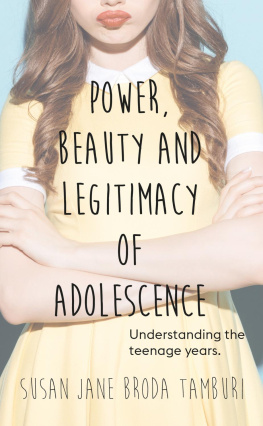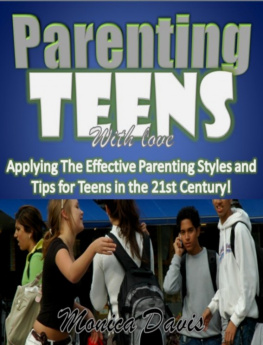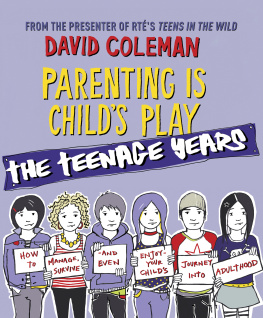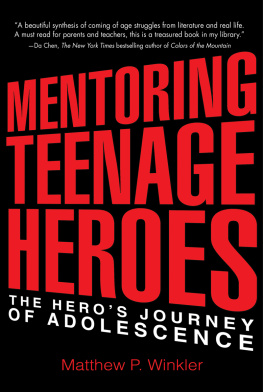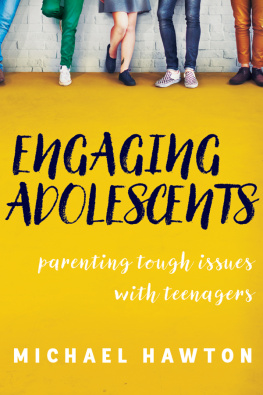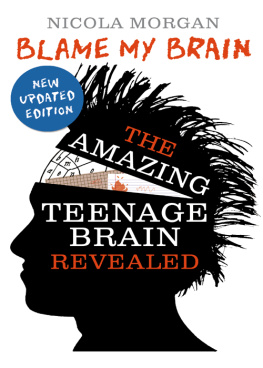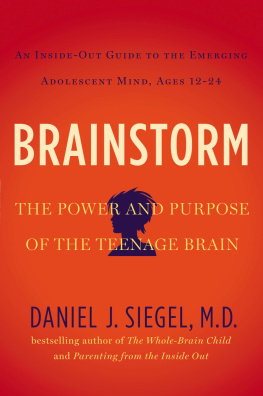The famous French film director, screenwriter and producer said that only people with bad memory remembered their adolescence as being carefree.
I have worked for more than twenty-five years with teenagers. Being a teacher to students aged between fifteen and twenty-two, I have been able to observe and analyse their behaviour in detail. After such a long period of time, I feel extremely close to them. What used to amaze, astonish or even shock me at first does not anymore. I find their sometimes weird and rash reactions not only foreseeable and understandable but in some cases moving. Adolescents have won me over so to speak, so much so that I want to become their advocate in helping them being understood by their parents. I have written this book, on the one hand, to help parents in the management of their relationship with their teenagers, giving them a road map to follow, and on the other hand, to share with them a few fictional representations of youth in literature. The final objective being to give adults a few very simple guidelines that will show them how to become efficient parents. The main idea is for mothers and fathers to embrace this wonderful moment in life which is very often badly understood or handled and equally apprehended by the teenagers themselves. Ultimately it is about creating a lifelong relationship with maturing children based on love, respect, understanding and collaborative construction.
UNDERSTANDING TEENAGERS
How to handle a teenager is an ongoing problem. The world changes, behaviours evolve, but the passage from childhood to adulthood is a perennial issue. Our children all go through a stage in their life which is critical and every parent is, one day or another, confronted to the problem of managing this troublesome period called adolescence. The etymology of the word comes from the Latin adolescere: growing and alere: to nurture, to make something grow. Adolescence corresponds to the period of life between puberty and adulthood. It is a journey that will bring the individual a greater autonomy having gone through a process of growing, learning and maturing. It is interesting to know that according to the UNICEF 2016 statistics, the teenage population was estimated at 1.8 billion, the largest adolescent population that the world has ever known.
In English, the term teenagers includes ages from thirteen to nineteen. But nowadays it seems that the period of adolescence is much longer and more flexible. Studies have shown that young people reach puberty much earlier and, as socioeconomic reasons push them to live at home over a longer period of time, the coexistence between parents and teens can last quite a few years.
Lets go back in time to fully understand the situation that teenagers face today. Their status has greatly changed over the years. In Europe, children of fourteen and even younger often left their homes to work for other families or to start an apprenticeship. In the 19th century the situation changed because of industrialisation and more and more teenagers stayed at home and worked to help the household financially up to the age of their wedding. Then in the 20th century, three main changes occurred; child protection laws, compulsory schooling and longer school years. These three elements meant that children were going to spend much more time in the home. Consequently, young people found themselves in a situation in which they became financially dependent on their parents. This was also enhanced by the fact that families became less numerous and that dwellings were getting bigger. Economic reasons linked to increasing unemployment are added factors which pushed teenagers and adults to live under the same roof. Up to this day, many young adults just cant afford to pay their own lodgings. The whole family dynamics is thus altered and parents have to find ways to adapt to this unsettling situation.
Dealing with adolescence is difficult but it is also a wonderful opportunity to do things right and to ensure a good and healthy relationship between two generations. This challenge can be either constructive or very damaging for everyone concerned, seriously jeopardising the future adult to adult relationship. Instead of just reacting or overreacting to teenagers behaviour one has to adopt a philosophical approach to bring harmony back in the family. One needs practical tools to achieve this but it is mainly about taking on a drastically new attitude.
I have a way of solving problems which came quite instinctively to me when my children started to become teenagers. My method was consolidated and made stronger thanks to my professional and personal experience as well as my constant documentation on the subject. Over the years, my approach was repeatedly reinforced by multiple contacts with colleagues, friends, students and parents.
My natural empathy and analytical frame of mind seem to encourage people to confide in me when they are faced with problems of all sorts, including those related to education. Each time a case is presented to me, I realise that it is the same misunderstanding that triggers off a bad relationship and strong tensions between the parents and the children. Although some situations seem deadlocked, there is always a key at hand.
My approach is extremely simple and goes against educational systems based on authority or stiff hierarchy. There are two preliminary conditions: firstly, a full understanding of what an adolescent is going through, not only physically but psychologically, and secondly the unequivocal will on the parents side to adopt an adequate personal behaviour. The final objective being to reconcile parents and teenagers and to restore the good relationship that existed between them previously.
One has to realise that the teenagers are in a middle of a bridge which is connecting childhood to adulthood. In order for the youths to manage to cross it peacefully and to prevent them from either getting lost in the middle of it or jumping off, the adult will have to accompany them step by step to the other side thus allowing them to continue life harmoniously. As we shall see the adolescent will need a loving guide, and that guide is you. But its the nature of the guidance that will have to be appropriate because there are many traps best-intentioned parent may well fall into.
David le Breton, anthropologist and professor of sociology at the university of Strasbourg uses a similar image in his book In Suffering. Adolescence and Entrance into Life (2007):
Even if the human condition always remains unachieved and therefore in a kind of adolescens, the passage to the other side represents a farewell to childhood, and the fact that now one is the author of ones own existence. During the period between these two worlds which is, as it were, a prelude to manhood or womanhood, the youth is simultaneously in search of his autonomy but without wanting to cut himself from the guardianship of his surrounding, he thus experiments for the best or for the worst his status of subject, the frontier between the within and the without, plays with social bans and tests his place within a world in which he doesnt really recognise himself.
I am going to show how to accompany teenagers, step by step, and consequently modify the tense relationship that often prevails between the two generations at such a time. This implies from the part of the adult both humility and a capacity of careful listening, two qualities that are sometimes missing.

